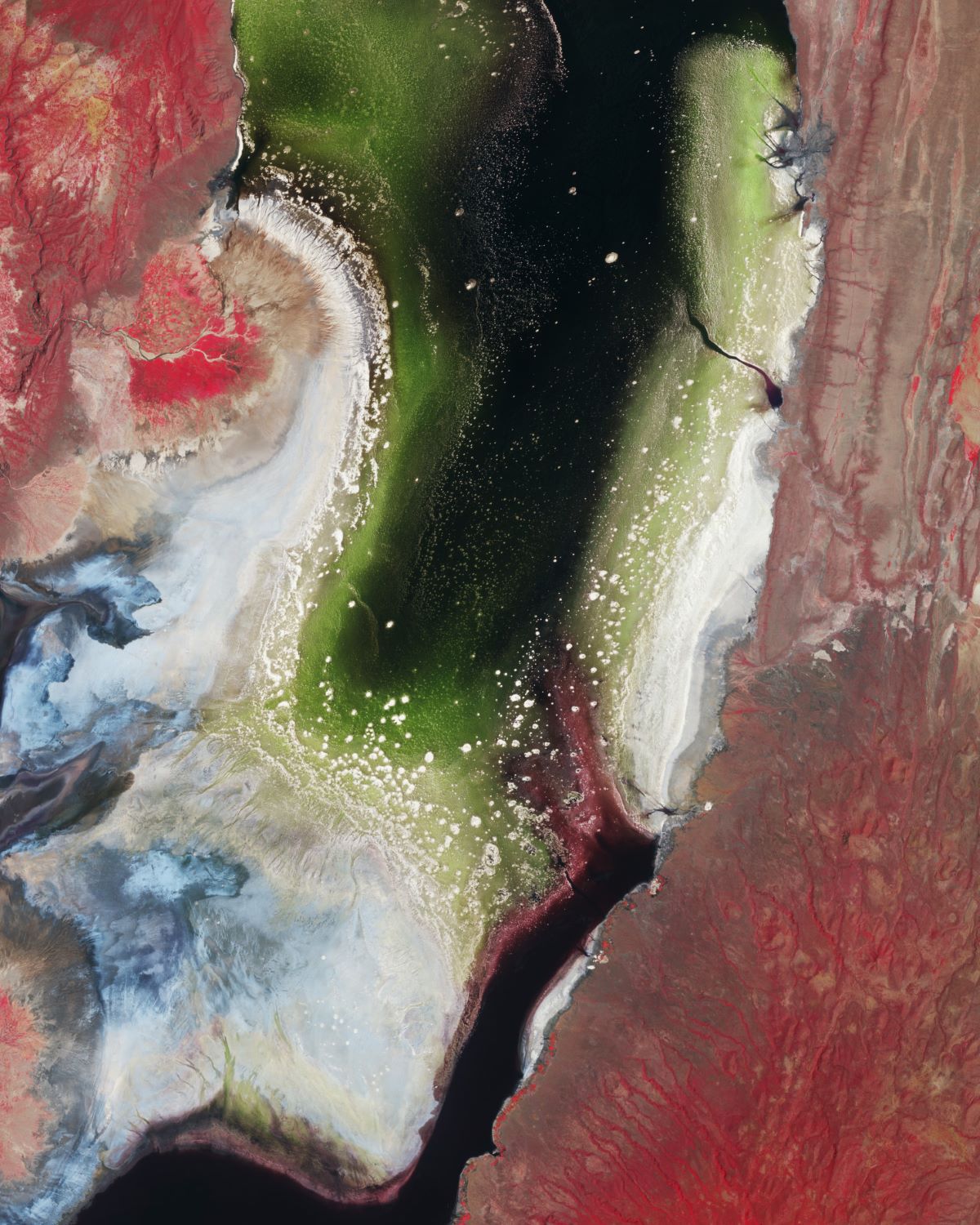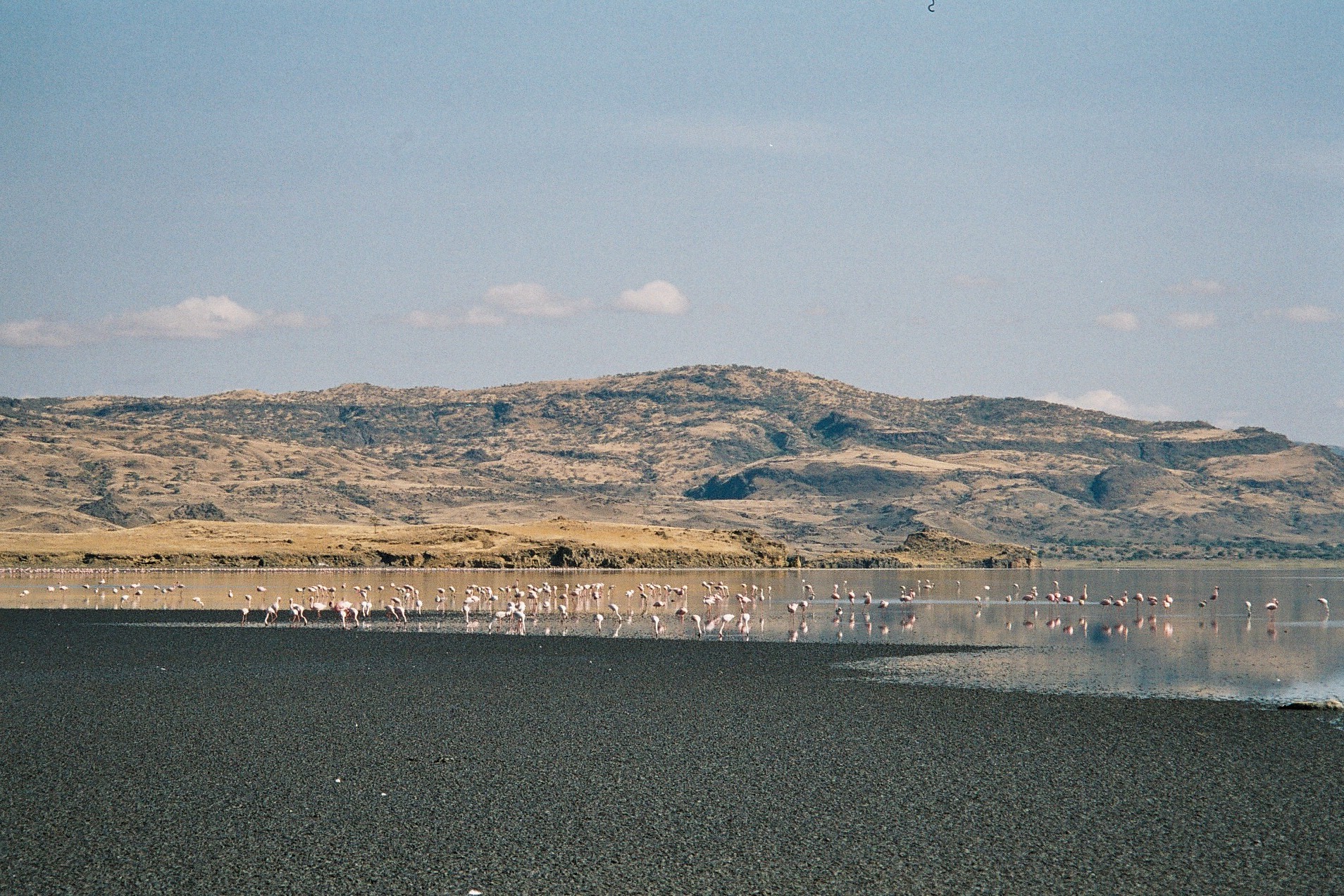ESA’s Copernicus Sentinel-2 captured Lake Natron, Tanzania.

Lake Natron is a salt or alkaline lake located in north Ngorongoro District of Arusha Region in Tanzania at the border with Kenya. It is in the Gregory Rift, which is the eastern branch of the East African Rift. The lake is within the Lake Natron Basin, a Ramsar Site wetland of international significance. It is the only regular breeding area for Africa’s lesser flamingoes, although this habitat is not protected and is under threat from planned development projects. The lake is a maximum of 57km long and 22km wide, and 3m deep. The color of the lake is characteristic of those where very high evaporation rates occur. The red accessory photosynthesizing pigment in the cyanobacteria produces the deep reds of the open water of the lake and the orange colors of the shallow parts of the lake. The alkali salt crust on the surface of the lake is also often coloured red or pink by the salt-loving microorganisms that live there. Salt marshes and freshwater wetlands around the edges of the lake do support a variety of plants.
The local scenery on the ground is as follows.

Reference: ESA Earth Observation’s Tweet
See earthview photo gallery: LiVEARTH